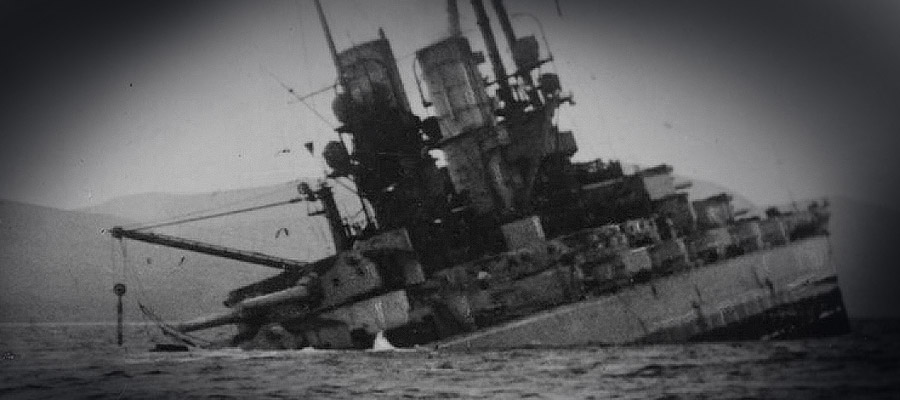SMS Bayern - Salvage Site
The SMS Bayern was the lead ship of the Bayern Class of battleships. Although the Bayern was raised as part of the salvaging operations during the 1930s, four of its turrets broke free and remain on the seabed.
The Bayern Class was originally to consist of four battleships, but only the Bayern and its sister ship the Baden were built to completion as building efforts had switched to U-boats during the war. This also resulted in the two completed ships only being commissioned towards the end of the war. The Bayern was commissioned in July 1916, thus missing the Battle of Jutland in May/June 1916.
Indeed the Bayern was involved in little fleet action during the war and the action it did see was largely insignificant. A month after being commissioned, the ship was part of a fleet advance into the North Sea. However, the mission to bombard the British town of Sunderland was aborted after reports surfaced that the British Grand Fleet was en-route to meet the German forces.
During Operation Albion in October 1917, the Bayern was due to take part in the German attack on the Imperial Russian Navy forces. Shortly after the German attack began, the Bayern struck a mine and ended up having to steam back to Kiel for repairs. By October 1918 the ship had been in good working order for about a year and was set to take part in the final battle between the German High Seas Fleet and the British Grand Fleet. Admiral Reinhard Scheer had approved the battle plan, but had disregarded the consequences his ships and men were likely to suffer. This resulted in a mutiny aboard many of the ships and the attack was cancelled.
By November 1918 the battleship was interned in Scapa Flow with the remainder of the High Seas Fleet and with little action to speak of. On 21 June 1919 Rear Admiral Ludwig Von Reuter gave the command to scuttle the entire fleet to prevent it from falling into British hands. British forces managed to beach the Baden, but the Bayern sank to the seafloor. The ship was raised in September 1934, in what proved to be a somewhat calamitous salvaging operation. Four gun turrets fell out as the ship was being raised and they remain imbedded in the seafloor at 36 metres. There is also a large indent in the seabed next to the turrets – this marks the spot where the ship was dropped during the first attempt to raise it. Although the structure of the wreck no longer remains, the gun turrets alone make for a fascinating dive.














